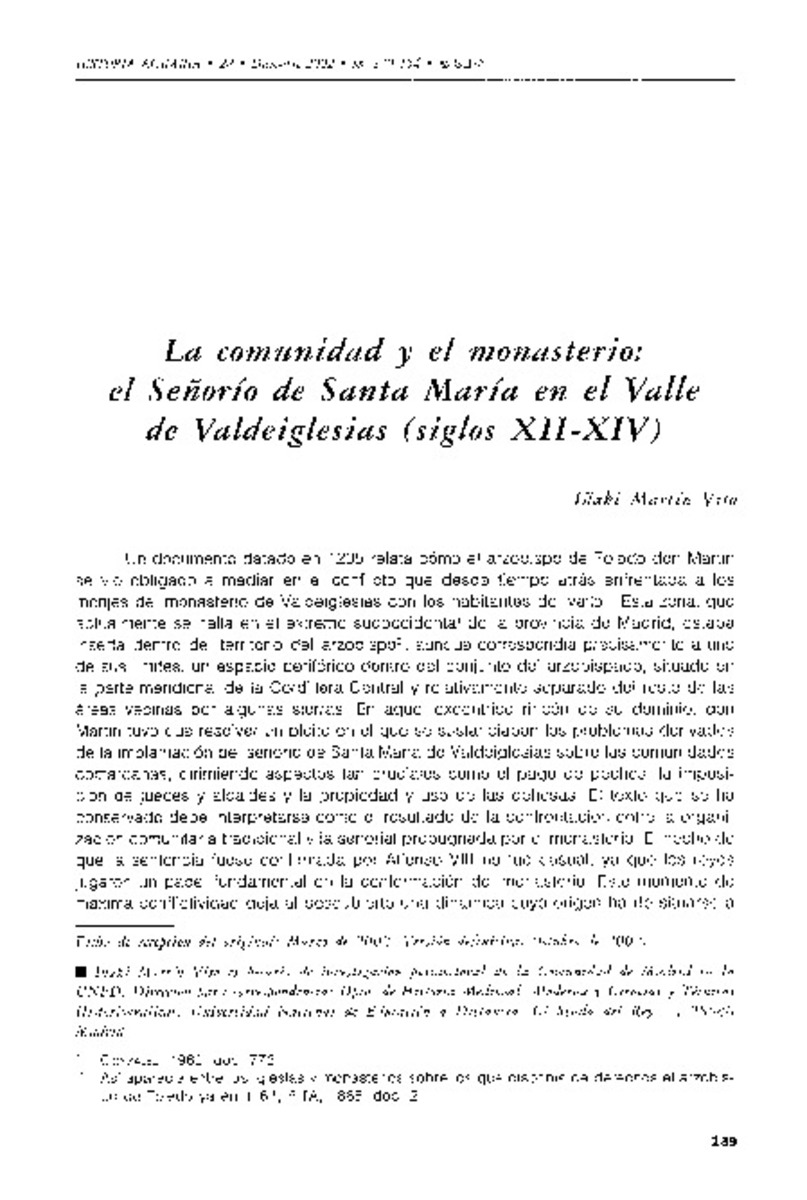Mostrar el registro sencillo del ítem
La comunidad y el monasterio: el Señorío de Santa María en el Valle de Valdeiglesias (siglos XII-XIV)
| dc.contributor.author | Martín Viso, Iñaki | |
| dc.date.accessioned | 2015-09-17T10:42:49Z | |
| dc.date.available | 2015-09-17T10:42:49Z | |
| dc.date.issued | 2002-12 | |
| dc.identifier.issn | 1139-1472 | |
| dc.identifier.uri | http://hdl.handle.net/10234/132715 | |
| dc.description.abstract | The valley of Valdeiglesias was a part of the highlands of central Spain. The Andalusi had not established permanent control of these lends, so a traditional system of territorial organization based on settlements in these highlands and a strong system of ownership inside the community was able to survive. The Castilian kings managed to break up the pre-feudal model by creating the Monastery of Santa María, which received a patrimony of estates in the surrounding areas, providing a basis for monks` dominance over the inhabitants. Yett the kings could not supplant the old system of common pasturelands which strengthened the position of the inhabitants of the region, organized in their own council that,although not independent, controlled much of the local production. This impasse meant that Santa María de Valdeiglesias did not achieve a solid seigniorial power. | ca_CA |
| dc.format.extent | 16 p. | ca_CA |
| dc.format.mimetype | application/pdf | ca_CA |
| dc.language.iso | spa | ca_CA |
| dc.publisher | Sociedad Española de Historia Agraria (SEHA) | ca_CA |
| dc.relation.isPartOf | Historia agraria: Revista de agricultura e historia rural, nº 28, p. 139-154 | ca_CA |
| dc.rights | © SEHA | ca_CA |
| dc.rights.uri | http://rightsstatements.org/vocab/InC/1.0/ | * |
| dc.subject | community | ca_CA |
| dc.subject | manorialism | ca_CA |
| dc.subject | ownership | ca_CA |
| dc.title | La comunidad y el monasterio: el Señorío de Santa María en el Valle de Valdeiglesias (siglos XII-XIV) | ca_CA |
| dc.type | info:eu-repo/semantics/article | ca_CA |
| dc.rights.accessRights | info:eu-repo/semantics/openAccess | ca_CA |







